2023 Mercedes-Benz EQE 350 First Drive Review | A good little brother
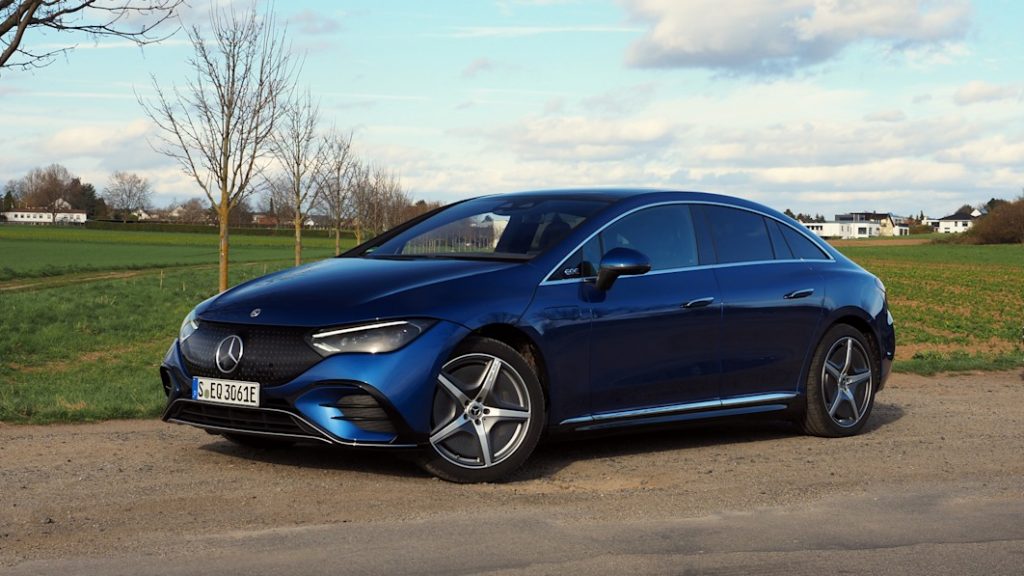
FRANKFURT, Germany — Mercedes-Benz is no stranger to sub-brands: AMG, Maybach and even Smart all showed a new facet of what a Benz could be. The introduction of a sub-brand first needs to set the tone, something that later models can then refine as the years go on. Mercedes’ latest sub-brand, EQ, is being broadly applied to a new, exciting updated crop of electric vehicles, which kicked off with the EQS sedan last year.
With its “one-bow,” cab-forward design and advanced electric drivetrain, the EQS went out of its way to define what this new category of fully up-to-date Mercedes EVs could look like. Now, the next model, the Mercedes-Benz EQE, has the unenviable task of rounding out the EQ line-up, taking the characteristics that made the EQS unique among Mercedes sedans and turning them into the building blocks of a new electric era of three-pointed star models. Step inside the upcoming EQE sedan, which plays the role of the E-Class to the EQS’ S-Class, and you can’t help but notice the EQ family resemblances.
Some of these are small, like the port in front of the driver-side front door. While the hood on both models can technically be opened, there’s little reason to if you’re not a mechanic (and a highly specialized one at that), so Mercedes added a pop-out spout to pour in washer fluid. The front fascias [fasciae?], taillights and extendable door handles all tie the EQE and EQS together, visually.
One vital difference between the EQS and its S-Class cousins that came before it is an all-new electric vehicle platform called EPA2. EPA2 will be used in at least four production models – the EQS and EQE sedans as well as SUV versions of both, the EQS SUV and the EQE SUV. Think of them as a family that decided to all wear matching sweaters for a holiday photo, whereas the others, like the GLB-derived EQB, are like that one uncle who didn’t get the message about what to wear this year. He’s still family, just from, you know, that side over there.
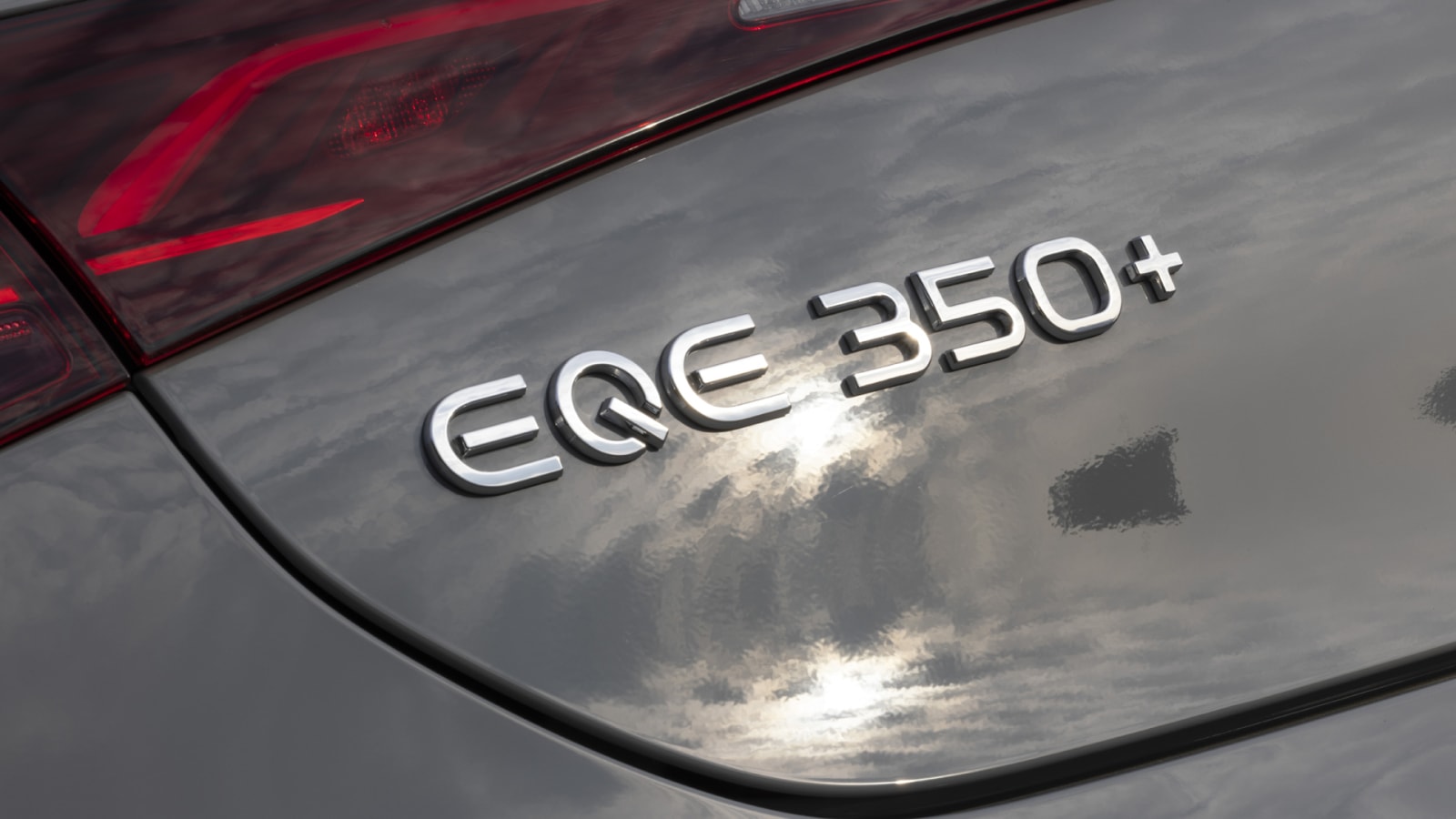
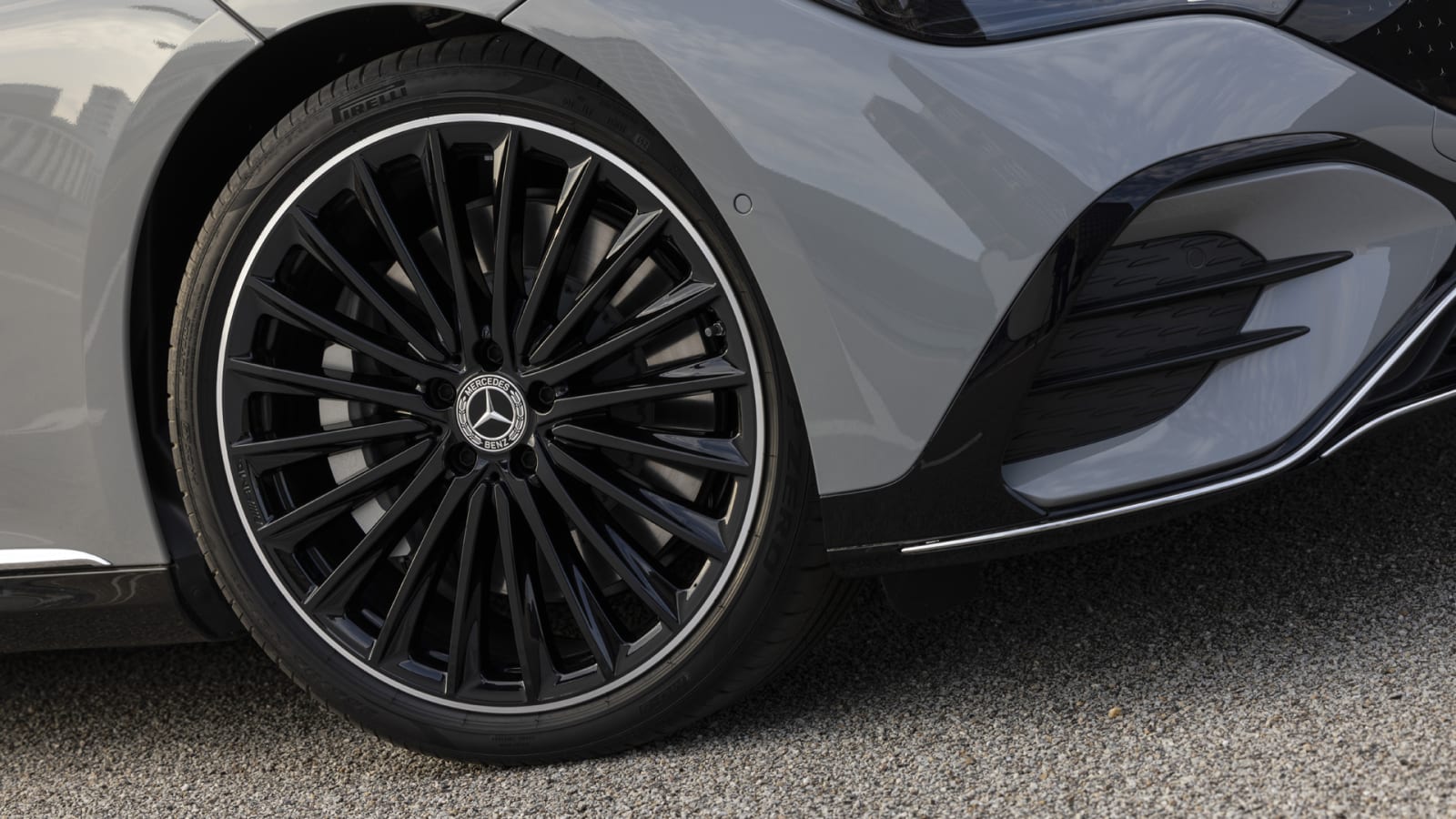
But back to the EPA2 models. Considering the lineage of the EQS and EQE, it’s no surprise that the EQE drive experience shares plenty with the EQS. While I personally haven’t yet driven an EQS, given the various reviews of the EQS and AMG EQS here on Autoblog and elsewhere, it became clear that there are more similarities between E and S than differences. When the SUV versions of these models arrive in the near future, their height and weight differences will change what the EVA2 platform feels like on the road, but the two EQ sedans are unquestionably kin.
Despite the similarities, the EQE offers its own touches. It has a real trunk, for example, instead of a sedan-y hatchback of the EQS. The EQE’s 122.9-inch wheelbase is also 3.5 inches shorter than the EQS and although that means it has a smaller back seat, Mercedes did not provide exact specs to know how much is lost from S to E. The EQS has an immense amount of legroom, however, so shaving a few inches shouldn’t matter much. Headroom is similarly shaved down from the sedan norm because of the fastback roofline, but I felt comfortable enough while sitting there (I’m 5’9″), and it can feel especially airy with the optional panoramic sunroof.
The shorter wheelbase also accommodates a smaller, 90.6-kilowatt battery than the 107.8-kWh unit in the EQS. While official range numbers for the U.S.-bound version are not yet available, Mercedes says the EQE will get up to 410 miles on the European WLTP scale, which should be something like mid-300s using the EPA’s numbers. That’s roughly what the EQS does, but we’ve also found it can easily exceed its EPA figures by 20 miles.
The EQE offers effortless, quiet acceleration that’s as smooth as anything you’ll find this side of a quantum stabilized atom mirror, which, at this point, is probably redundant since that’s basically what’s written about every electric vehicle. It’s the nature of the quiet beast. During my time in the rear-drive EQE 350, the first version of the EQE coming to the U.S., it’s obvious that there isn’t enough oomph in the 215-kW rear motor that provides 288 horsepower and 391 pound-feet of torque to truly glue a passenger to the seat cushion. For that, you’ll have to wait for the dual-motor EQE 500 or the AMG version that have been promised. Still, the EQE 350 more than holds its own on both the city streets in Frankfurt, Germany, where the test drive took place, and at Autobahn-speeds darting through the nearby countryside.

Like the EQS, the EQE shines with three levels of regenerative braking: strong (also called D-), normal (D) and none (D+) that you adjust using paddles behind the steering wheel. These variants should be readily understood by anyone who’s driven a new EV recently, but the new intelligent recuperation setting that uses front-facing sensors to avoid hitting obstacles, called D Auto, is something unique. Playing around with these different levels of regen braking – setting the car to D+ for pure coasting on the Autobahn and then shifting to smart one-pedal mode (D Auto or D-, depending on your preference) in the city – is absolutely an underrated aspect of enjoying an EV, and should really be an automatic feature of any new model. The electric vehicles of Volkswagen Group, especially the Porsche Taycan, see things differently.
The EQE also offers a rear-axle steering option (as in the EQS) where the rear wheels can turn up to 10 degrees to allow for tighter turns – the industry norm is between 3 and 5 degrees. With it, the turning circles shrinks to just 35 feet compared to 41 without. It’s a neat trick that helps the EQE feel right at home in cities where driving a tiny Smart ForTwo remains a sensible option.
The EQE’s four-link front suspension and multilink rear suspension is adapted from the new S-Class, and offers Airmatic air suspension with adaptive damping. German roads aren’t known for their potholes, but that shouldn’t dismiss the system’s ability to make you feel like you’re too good to feel the bumps in the pavement.
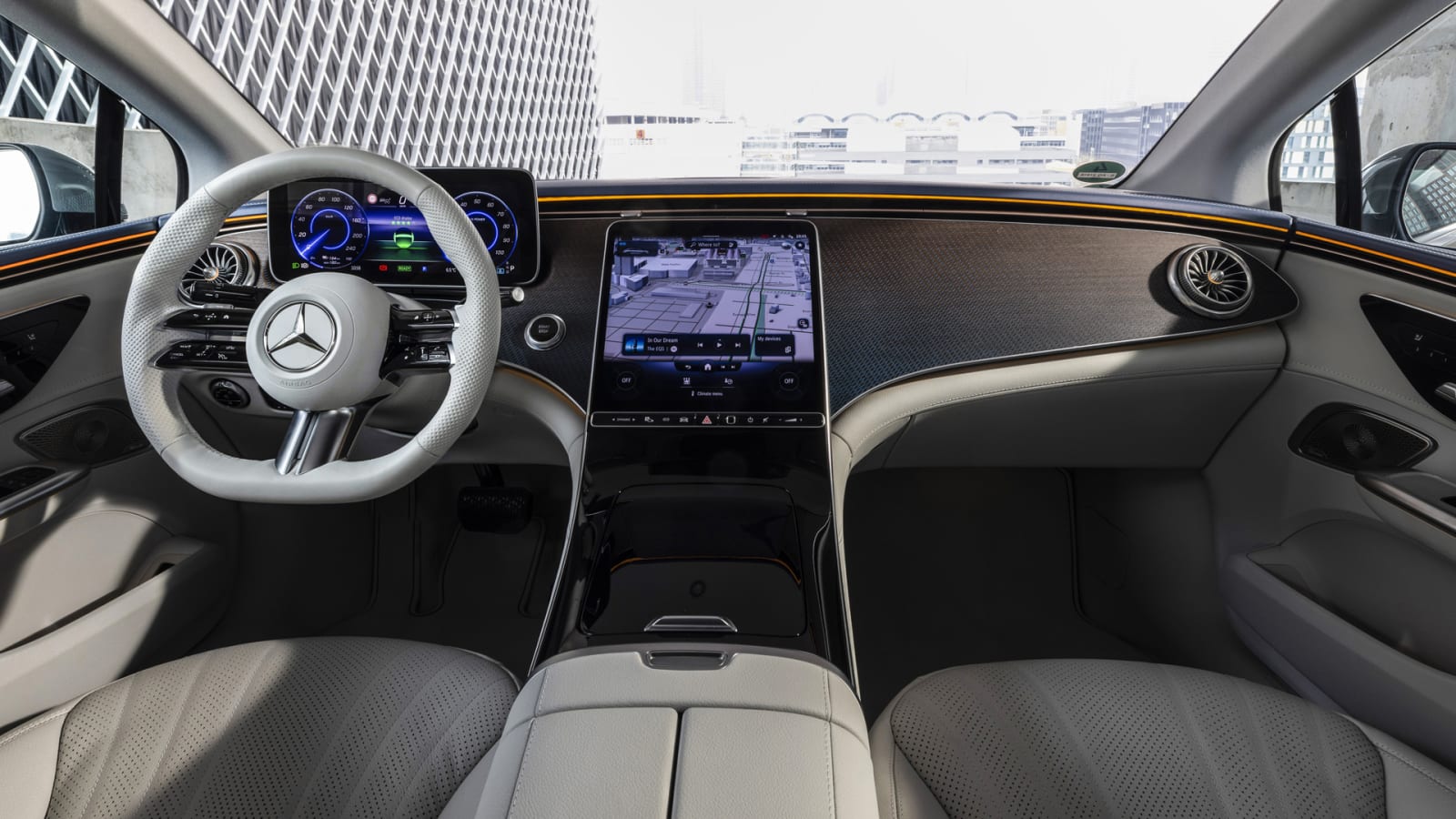
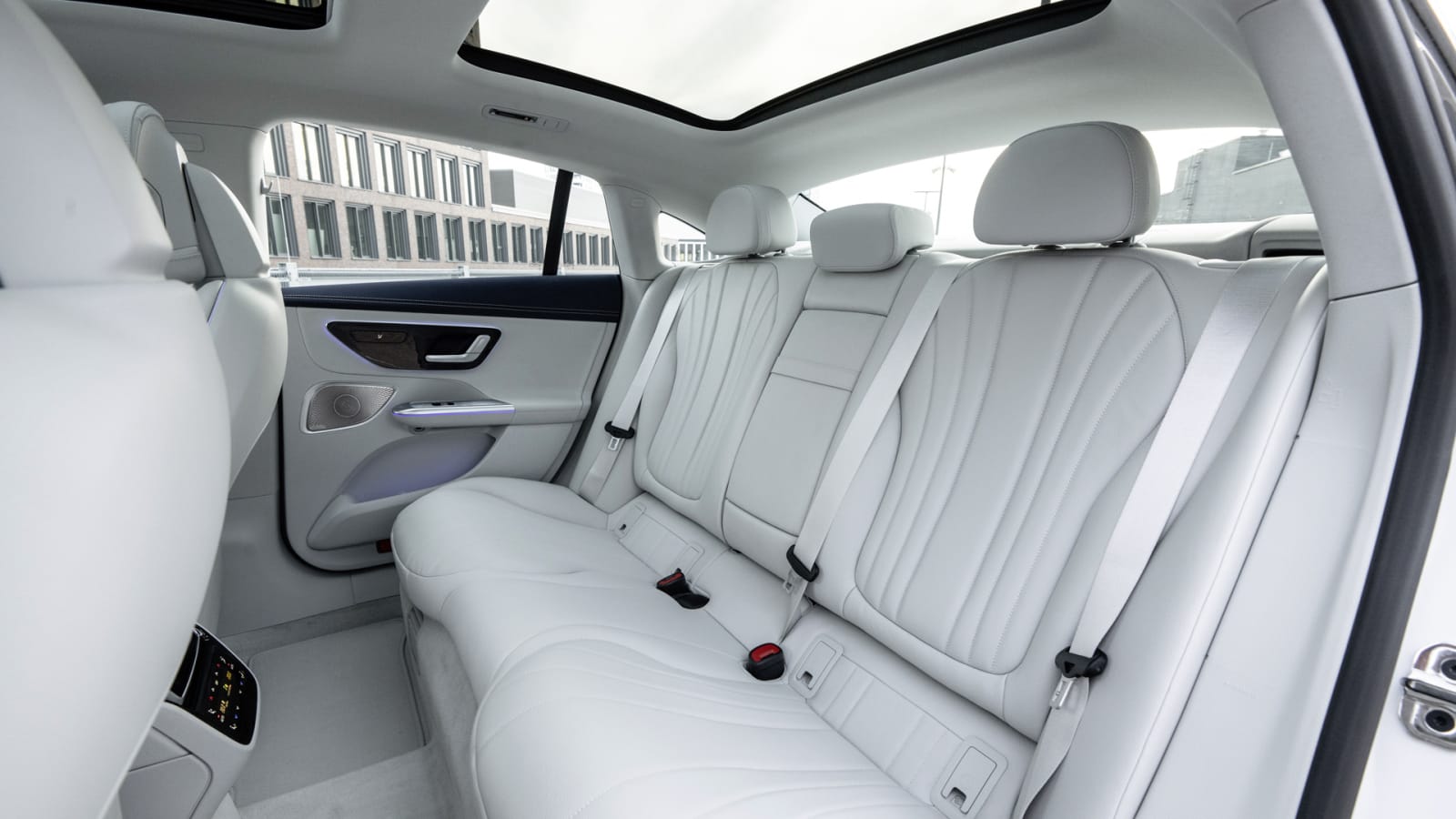
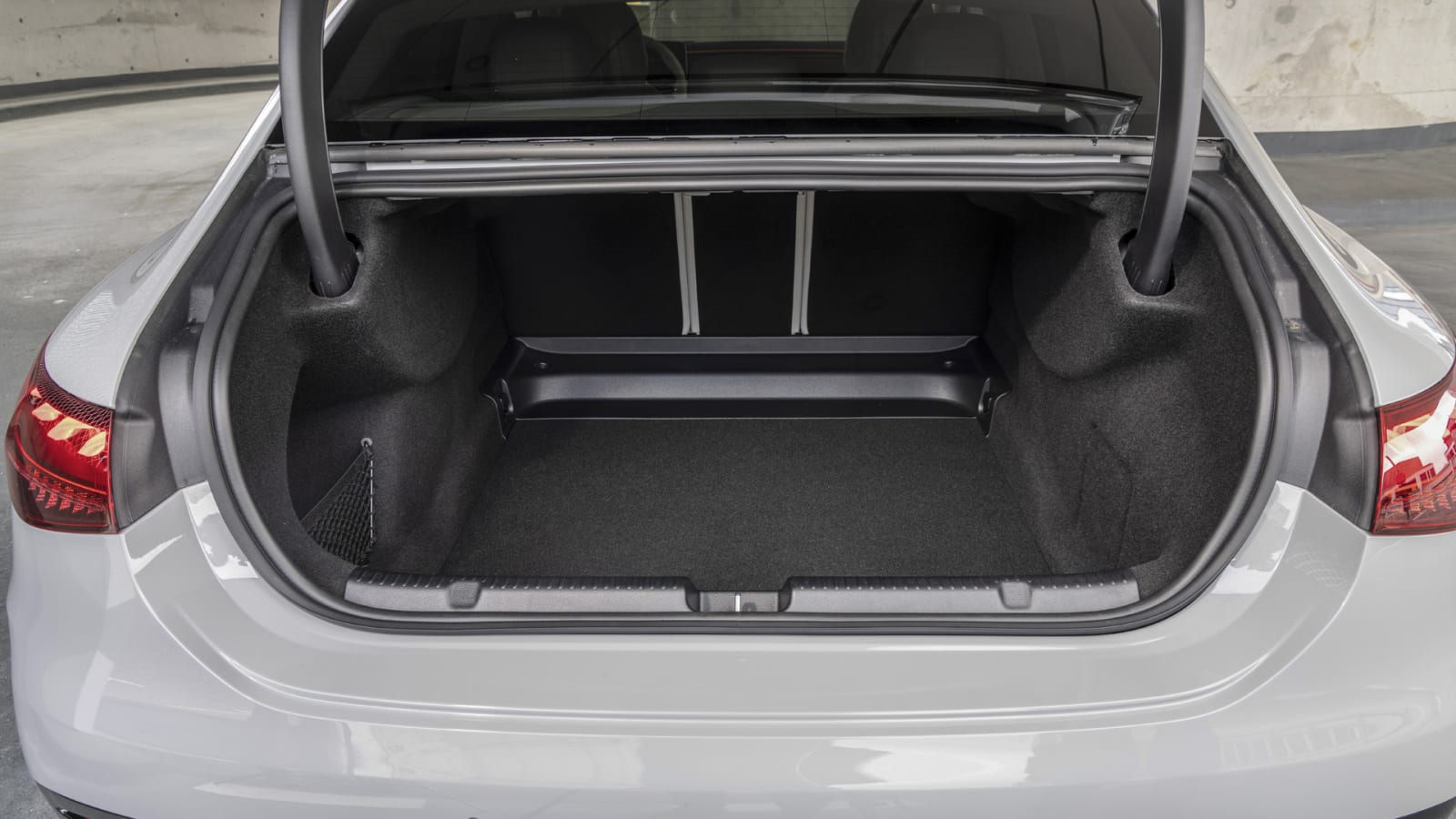
We haven’t yet talked much about the interior, but here again, it is largely a mirror image of the EQS. The top of the dashboard felt a bit high, reducing visibility in a way that wasn’t always enjoyable but not so much that it made the car undrivable. The MBUX Hyperscreen option is available here, blending three separate screens (one for the driver, one for infotainment, one for the front passenger) behind a single, 56-inch curved glass surface. Choosing the standard infotainment option – sans Hyperscreen – should not be discounted, as the wood inlay that replaces the screen is beautiful, completely at home in the plush interior. It should also be noted that standard system is in fact the brand-new, portrait-oriented version of MBUX found elsewhere only in the S-Class and SL. So a downgrade perhaps, but still more advanced than the Mercedes norm.
Below that standard screen is an unusual touch-sensitive bar of control icons that shortcut you to various functions: drive modes, camera views, vehicle settings, audio controls and so on. A smaller version of this resides on the center console behind the cupholders with the Hyperscreen. What’s strange about either version of the bar is that the entire thing is “clickable.” Feeling the entire bar move when any individual “button” is pressed is strange. Unlike the touch-sensitive, haptic surfaces in some other cars, this setup works fine. It’s just weird to use at first.
All in all, the EQE is a welcome addition to the EQ sub-brand. As more models join in, the EQ line will grow into a large, complicated, battery-powered family. For now, there are only two, and they have assuredly set the stage for what’s to come. Pricing for the EQE will be announced sometime later this year, but it should be around $70,000 when it arrives in U.S. showrooms in late 2022.
Related video:



